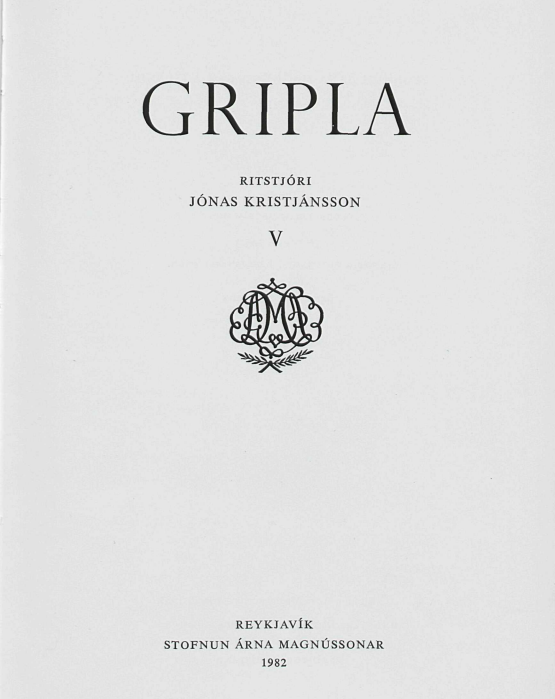Skriftaboð Þorláks biskups
Abstract
T H E aim of the present article is to present a reliable edition of the so-called Penitential of St. Þorlákur. Some comments on the text and its possible sources are also made. Some confusion can be noticed in earlier research on this text, but most of the editions and translations are based on the two MSS AM 624 4to and AM 625 4to and the text printed in Historia Ecclesiastica Islandiœ (1778) is drawn from these two MSS. The MS AM 42a 8vo also contains the text of the Penitential but the editors of Diplomatarium Islandicum who published it believed that it was from the fourteenth century. The three above mentioned MSS are all of roughly the same date, i.e. from around 1500. The text in AM 624 4to is shortest; it lacks an epilogue and an appendix in which some later bishop confirms the Penitential and adds some rules of a more lenient nature. It is most likely that the epilogue and the appendix have been omitted in AM 624 4to by a copyist.
In the edited text the version of AM 624 4to and AM 42a 8vo is called A, and the version of AM 625 4to is called B. The A-version seems to be more original than the B-version which omits most of the classification of the feasts. The rules in the Penitential are proposed systematically according to the severity of the penances, first for the gravest transgressions, i.e. bestiality and sodomy, then for adultery and incest which is scrupulously accounted for and graded according to kinship. The severity of penances for sexual offences committed on feast days is partly dependent on the relative solemnity of each particular feast day. Penances for theft, bloodshed, perjury, tithe fraud and sexual offences other than those previously mentioned are also accounted. The last part of the Penitential mainly contains rules for priests concerning how they should sing the mass and directions as to what penances they are to incure if they do not adhere to the rules. At the end of the Penitential there is an epilogue on general rules for the determination of penances according to the nature of the offence (25). It is obviously derived from Excarpsus Cummeani perhaps with a note from Roman law. After that there is an appendix with some more lenient rules (26-35) as mentioned above, which do not belong to the original Penitential. The sources of the Penitential are obviously of various kinds. Very close parallels to Excarpsus Cummeani are pointed out as are similarities to Roman and canonical law. The secular law in Iceland has also influenced the Penitential. Konrad Maurer has pointed out some Anglo-Saxon characteristics contained in it. The vast material of Icelandic ecclesiastical laws from the middle ages is far from having been thoroughly investigated, but an outline of its development is given. The so-called 'tithelaw' {Tíundarlög) from 1096 is among the oldest. The older church law (Kristinréttur hinn forni) is from 1122-33 and therefore pre-gratian, but the younger church law (Kristinréttur hinn nýí) is from 1275 and post-gratian. The Penitential of St. Þorlákur (bishop 1178-1193) is from a transition period. According to his saga Þorlákur Þórhallsson studied in Paris and Lincoln sometime between 1150-60. The cathedral school of Lincoln had some reputation for teaching law about 1160. The civil war in Norway, the ascendancy of king Sverrir Sigurðarson and the exile of the archbishops of Niðarós in the last decades of the twelfth century made it necessary for the Icelandic bishops to take independent decisions and propose laws according to the circumstances. That is some of the background of the Penitential of St. Þorlákur of Skálholt. Lastly it is mentioned that Þorlákur possibly got to know Roman law in England when he studied there.



